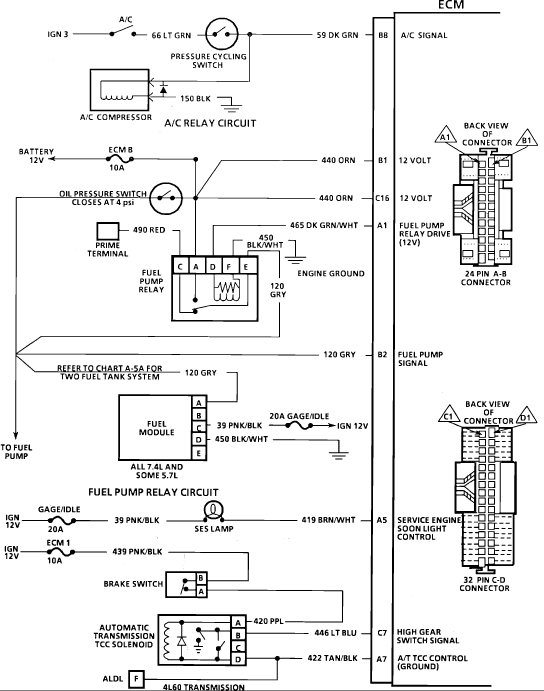If your truck has a mechanical fuel pump, you must perform three tests to determine if it is working properly, they are:
The Volume test - disconnect the fuel line from the carburetor. Put the disconnected end of the line into a container (to catch the pint or so of fuel that will run out during the test). Disable the ignition so that the vehicle will not start during the test (disconnect the battery terminal of the distributor). Next, spin the engine over for about twenty to thirty seconds to see if it delivers about a pint or more of fuel. If so, the pump is working properly and there is no need to run the other test.
The fuel pump pressure test - (if the pump fails the first test) Connect a pressure gauge to the disconnected fuel line (disconnected from the carburetor). You may have to hold it in the disconnected line just to be sure that it doesn't come out. I use a vacuum gauge which also reads pressure (relatively inexpensive). Have a trustworthy partner to spin the engine over for about ten to fifteen seconds, note the pressure reading. It should generally be between 4 - 10 psi. If so, move on to the next test.
If not, disconnect the same fuel line from the fuel pump itself. Repeat the test with the pressure gauge pressed/connected to the pressure outlet of the fuel pump. If it passes the test this time, your fuel line from the pump to the carburetor is clogged (not very likely).
If it does not pass the test this time, remove the fuel pump. Check it for damage. Also check the fuel pump rod for excessive wear - you will have to remove it from the engine.
With the amount of miles on the vehicle it is possible for the camshaft lobe which operates the fuel pump to worn to the point where it cannot adequately operate the pump - especially for a long period of time. If all of this is good, since the pump failed the test, replace it.
The vacuum test - Disconnect the fuel line from the pump which comes from the gas tank. Connect the vacuum gauge to the vacuum outlet of the fuel pump. Spin the engine over for fifteen to twenty seconds and note the reading on the gauge. It should be around fifteen to twenty inches of vacuum. If so, that part of the pump is working fine and if the main problem is that no fuel is reaching the carburetor, you should check for an obstructed fuel line of clogged filter (which is in the gas tank). If the pump fails the vacuum test, replace it.
Please let me know if you need further assistance.
Wednesday, October 11th, 2017 AT 6:40 PM




